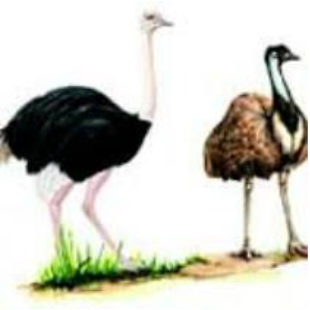|
The statue swore to me that it was an ostrich, but Brian Savin wondered if it was an emu.
I looked it up. Emus have three toes and ostriches have two toes. (Ostriches are also bigger. Who knew?) http://www.differencebetween.net/science/nature/difference-between-emu-and-ostrich/ The bird my wife found at Home Goods has three toes. Both birds' meat is red rather than white. At first, I thought maybe the emu was claiming it was an ostrich to avoid being eaten, but apparently both are eaten. Either way, the bird on our back deck took a fearsome barrage of acorns in recent days. We will take it inside for the winter, along with the stork and the penguin, also from Home Goods.
Brian Savin
10/4/2015 11:35:37 am
I turned on the tube this morning and found my only TV program, Sunday Morning, was displaced by the Jets in London. I like the Jets, but in the afternoon. They've got two big birds themselves in wide receivers Brandon Marshall and Eric Decker, with about the same characteristic differences as the ostrich and emu. One a bit bigger and runs a run faster, the other has the extra toe for mobility and quick slot turns. I think I'll nickname them Grief and Glory. Marshall (the ostrich) does all the hard work getting the team down field. He's Grief. With Marshall triple teamed in the end zone, Decker (the emu) get's to score the touchdowns weaving through crowds in the end zone.. He's Glory.
Brian Savin
10/4/2015 11:38:51 am
Sorry, the zoo is in Millbrook. I got distracted watching another Jet's touchdown and mistyped.
George Vecsey
10/4/2015 05:16:01 pm
Brian, thanks. Wait, it's football season? GV
Josh Rubin
10/5/2015 09:57:46 am
Who does the emu like in the divisional series? And who would he(?) have pitch game 4? Comments are closed.
|
Categories
All
|











